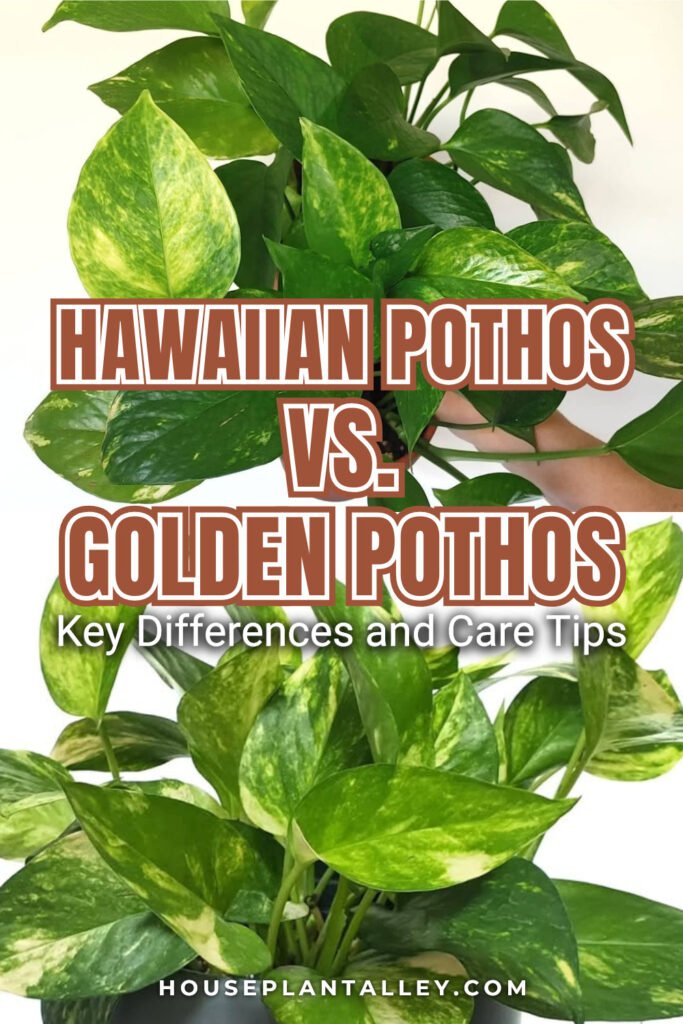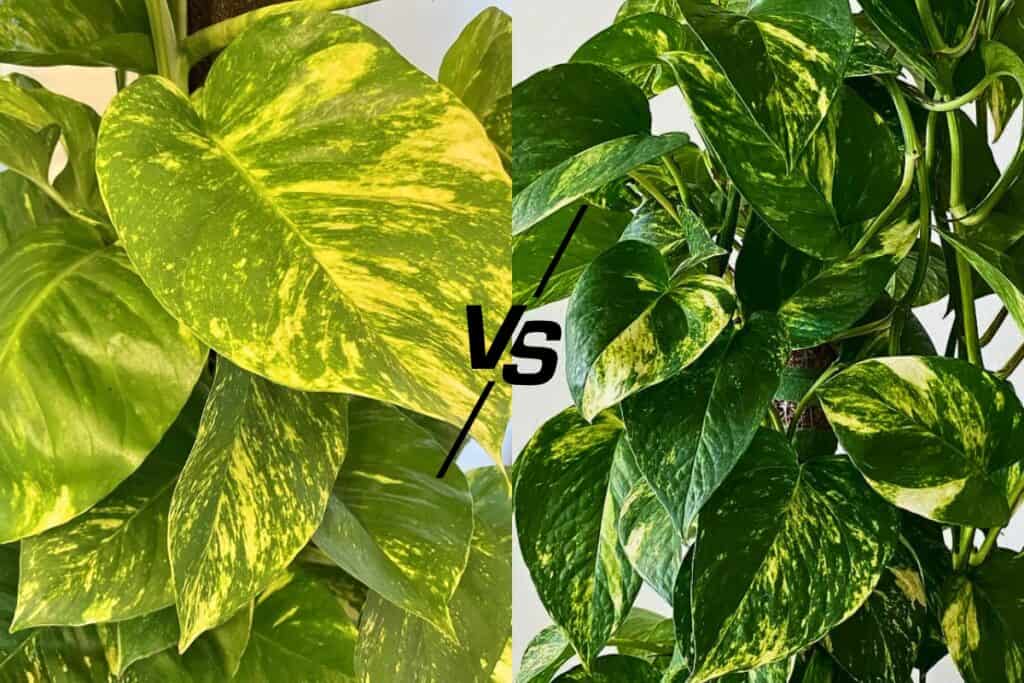Two popular pothos varieties often spark debates among houseplant collectors, yet most people struggle to distinguish between Hawaiian and Golden types. Both belong to the Epipremnum aureum family, but their visual characteristics, growth patterns, and care requirements differ greatly. Hawaiian pothos displays cream-colored variegation with broader leaves reaching 6-8 inches, while Golden pothos features yellow-flecked foliage typically measuring 4-6 inches. These distinctions affect everything from placement choices to watering schedules, making variety identification essential for success.

Contents
- 1 Meet the Contenders: Two Varieties of Epipremnum Aureum
- 2 Visual Differences: Leaf Shape and Variegation Patterns
- 3 Availability and Where to Find Each Variety
- 4 Growth Habits: Size and Speed Comparison
- 5 Light Requirements for Optimal Development
- 6 Watering and Soil Needs for Both Types
- 7 Troubleshooting Common Issues in Your Pothos Garden
Meet the Contenders: Two Varieties of Epipremnum Aureum
In the world of houseplants, few species create as much confusion as Epipremnum aureum, commonly known as Devil’s Ivy or Money Plant. These tropical natives from French Polynesia have spawned numerous cultivars, with Hawaiian and Golden Pothos leading the popularity contest.
Both varieties share identical propagation techniques, rooting easily in water or soil within 2-3 weeks. Their pest management remains straightforward, requiring only neem oil treatment when issues arise. While Golden Pothos displays characteristic yellow flecks, Hawaiian Pothos showcases creamy variegation with larger leaves. The confusion often stems from their nearly identical appearance during early growth stages, making proper identification challenging.
Visual Differences: Leaf Shape and Variegation Patterns

How does one distinguish between these nearly identical varieties when their juvenile leaves look remarkably similar? The key lies in observing subtle differences in leaf color and variegation patterns. Golden Pothos displays distinctive golden flecks scattered across heart-shaped, slightly pointed leaves. Hawaiian Pothos showcases lighter, creamy variegation that may shift to darker yellow under bright conditions. Growth patterns also reveal telling differences, as Hawaiian varieties typically develop larger leaves and achieve faster overall growth. Both maintain heart-shaped foliage, but Hawaiian specimens generally outpace their golden counterparts in size once established.
Availability and Where to Find Each Variety
While Golden Pothos practically fills every garden center shelf across the country, Hawaiian Pothos requires a bit more hunting to locate reliable sources. Most big-box stores stock Golden varieties exclusively, making them the go-to choice for impulse buyers. However, Hawaiian Pothos availability sources include specialty nurseries, online plant retailers, and local plant swaps where collectors gather.
Smart purchasing tips include buying from reputable sellers to avoid mislabeling issues, since both varieties look nearly identical when young. Check multiple local nurseries first, then explore online options. Plant enthusiast groups on social media often share leads on Hawaiian Pothos availability.
Growth Habits: Size and Speed Comparison
Both varieties demonstrate remarkable growth potential, though Hawaiian Pothos consistently outpaces its golden cousin in both size and speed under identical growing conditions. The growth rate difference becomes noticeable within weeks, with Hawaiian varieties producing larger leaves and longer vines more quickly.
Golden Pothos typically reaches moderate sizes indoors, while Hawaiian Pothos can achieve impressive plant height with proper care. Both species can exceed 10 feet outdoors in ideal conditions, but Hawaiian varieties consistently develop more substantial foliage. The size difference becomes particularly evident in mature plants, where Hawaiian leaves greatly outsize their golden counterparts.
Light Requirements for Optimal Development
Understanding proper lighting becomes essential for maximizing the development potential of these popular houseplants. Both varieties thrive in bright indirect light, though they tolerate various lighting conditions with remarkable flexibility. Light intensity directly influences their growth patterns, with Hawaiian Pothos particularly benefiting from brighter conditions to support its larger leaf development.
East-facing windows provide ideal morning sun exposure, while south-facing windows require sheer curtains for protection. Direct sunlight burns leaves, creating unsightly brown patches. Low-light tolerance makes these plants beginner-friendly, but peak growth requires consistent bright indirect light for robust variegation and healthy foliage expansion in both cultivars.
Watering and Soil Needs for Both Types
When it comes to watering these tropical beauties, patience becomes the gardener’s greatest virtue. Both Hawaiian and Golden Pothos follow the same watering frequency rule: allow the top 1-2 inches of soil to dry completely before watering again. However, Hawaiian Pothos may need slightly more frequent watering due to its larger leaf size and faster growth rate.
Soil composition remains identical for both varieties. The ideal mix combines two parts potting soil, one part perlite, and one part coconut coir. This blend guarantees proper drainage while retaining adequate moisture, preventing the dreaded root rot that plagues overeager plant parents.
Troubleshooting Common Issues in Your Pothos Garden
Even the most resilient Pothos plants occasionally signal distress through their foliage, and recognizing these warning signs early prevents minor issues from becoming major problems. Yellow leaves typically indicate overwatering, while wilting suggests either under or overwatering. Brown tips signal low humidity or insufficient water.
Proper leaf care involves removing damaged foliage with clean scissors. Brown patches from direct sunlight require immediate relocation to indirect light. Effective pest control starts with neem oil applications on irregular spots caused by insects. Monitor humidity levels, keeping them above 40% for ideal health.
